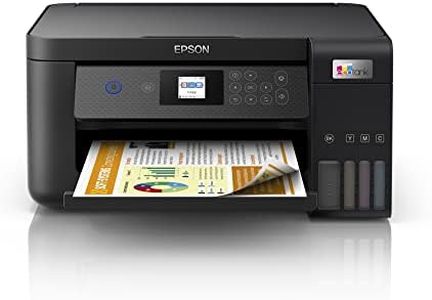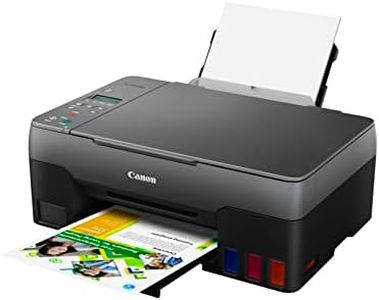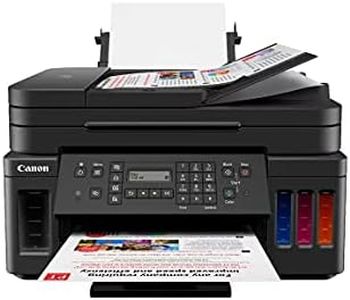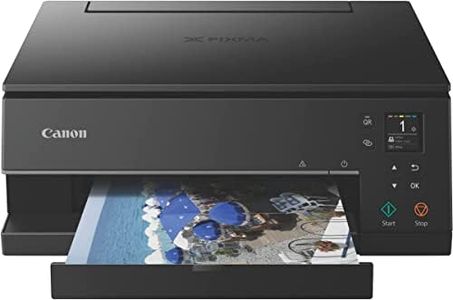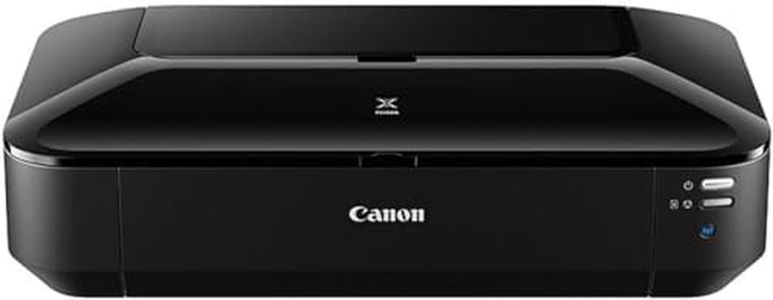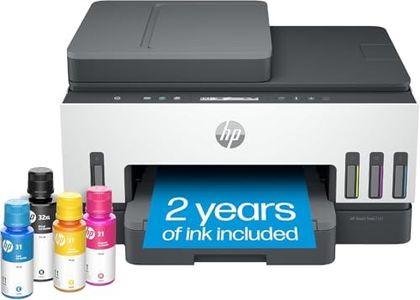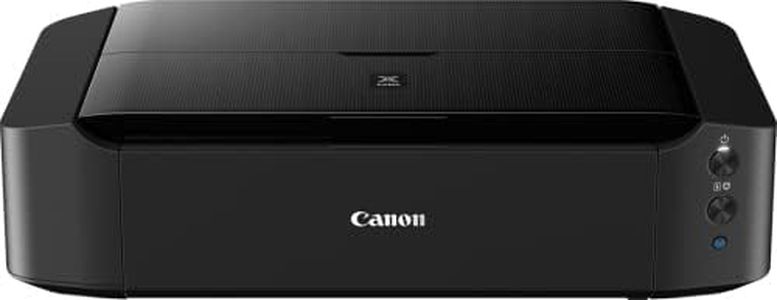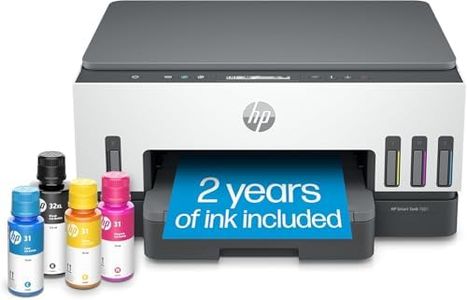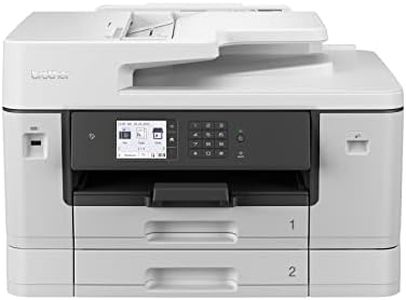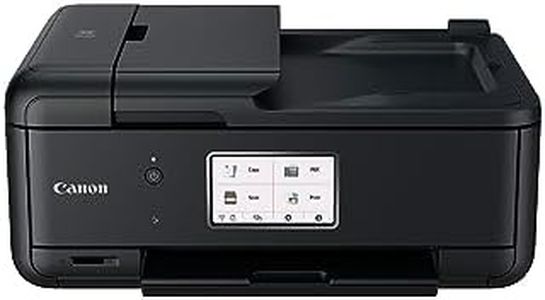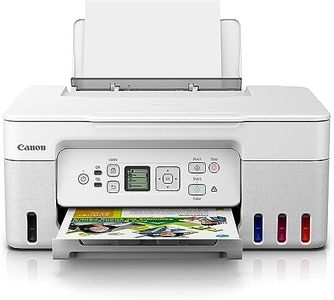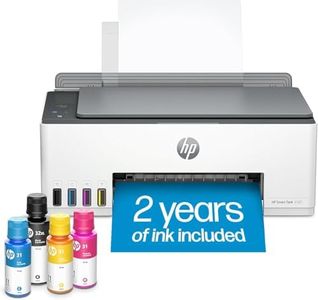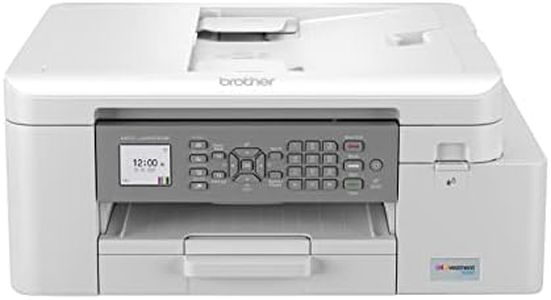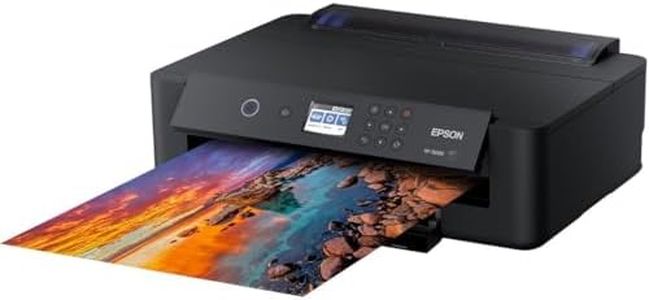We Use CookiesWe use cookies to enhance the security, performance,
functionality and for analytical and promotional activities. By continuing to browse this site you
are agreeing to our privacy policy
10 Best Inkjet Printers
From leading brands and best sellers available on the web.By clicking on a link to a third party's website, log data is shared with that third party.
Buying Guide for the Best Inkjet Printers
Choosing the right inkjet printer can feel overwhelming, but if you break it down to what you'll be using it for, you'll make a smarter choice. Inkjet printers are popular for their ability to print both text documents and high-quality color photographs, making them a versatile option for homes and small offices. As you search, focus on what exactly you need to print, how frequently you'll be printing, and whether features like wireless connectivity or multifunction abilities are important to you. Understanding the key specs and how they relate to everyday use is the best way to narrow down the large range of options.Print Resolution (DPI)Print resolution, often measured in DPI (dots per inch), tells you how detailed and sharp your printouts will be. Higher DPI values mean more dots of ink are used in each inch, resulting in clearer images or crisper text. Low DPI printers (around 600x600) are typically fine for text and basic documents, while higher DPI (1200x1200 or above) is better for photos and graphics. If you mostly print text, a basic resolution is enough. For those who plan to print photos or detailed images, aim for a higher DPI.
Print Speed (PPM)Print speed, measured in pages per minute (PPM), indicates how quickly your printer can produce documents. Faster models are useful if you need to print large documents regularly or share the printer among several people. However, speed can vary for color versus black-and-white printing and may be less important if you print only occasionally. Choose a higher PPM if you value speed for business or group use, but most home users will get by with moderate speeds.
Connectivity OptionsThis refers to the ways you can connect your inkjet printer to computers, smartphones, or networks. Common options include USB, Wi-Fi, Ethernet, and sometimes Bluetooth. USB is simple for individual use, while Wi-Fi or Ethernet allows multiple devices to print wirelessly or over a network, ideal for families or offices. If you want to print directly from mobile devices or share the printer, prioritize models with wireless or network capabilities.
Ink SystemInkjet printers use cartridges that can be found in different setups, such as combined color cartridges or separate cartridges for each color. Some use larger tanks for more cost-effective printing. If you print lots of color documents or photos, printers with separate cartridges or refillable tanks might be more economical since you only replace the color that's empty. Occasional users may find combined cartridges more convenient, as they are easier to replace.
Paper HandlingPaper handling covers the types and sizes of paper a printer can use, as well as the input and output tray capacity. Some printers only handle standard sizes like A4 or letter, while others can print on envelopes, labels, or glossy photo paper. Tray size matters if you print in high volumes or don't want to refill frequently. Consider what you'll print most (photos, documents, specialty paper) and choose a model that matches those needs.
Multifunction FeaturesMany inkjet printers are 'all-in-ones' with built-in scanners, copiers, and sometimes fax capabilities. These can be handy if you need to digitize documents or make copies often. If your printing needs are simple, a single-function printer saves space and can be easier to use, but if you need to do more than just print, an all-in-one is a smart, versatile choice.
Duplex PrintingDuplex printing is the ability to print on both sides of a page automatically. This saves paper and can give documents a more professional look. If you print long reports or need to reduce paper waste, look for automatic duplex capability. For light, infrequent printing, manual duplexing (turning pages yourself) may be sufficient.
